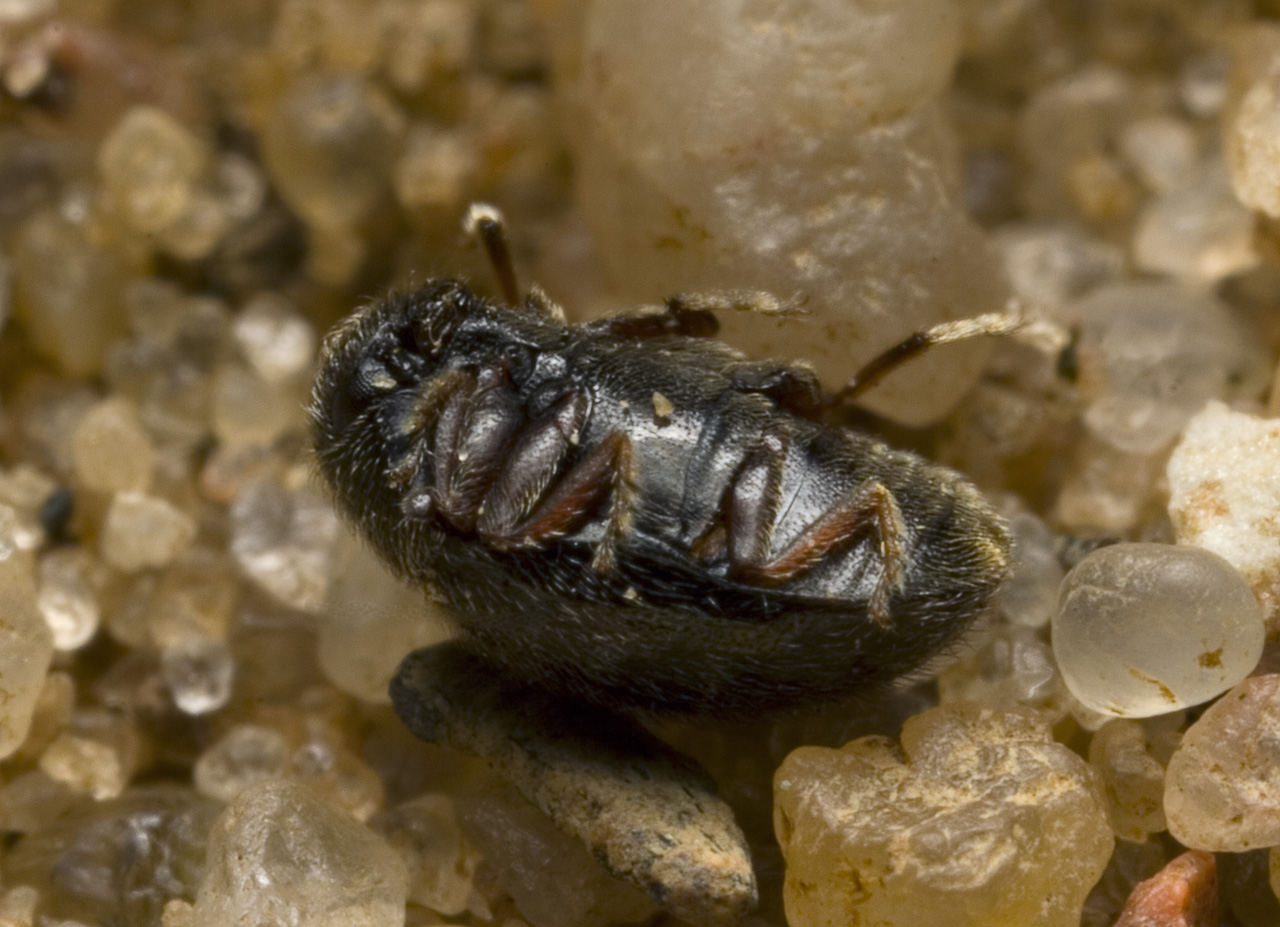
Simplocaria semistriata · kamuolvabalis
- semi-striated pill beetle
- Halbstreifiger Pillenkäfer
- karvanuppo
ukbeetles.co.uk/simplocaria-semistriata
This is a mostly central and northern European species; it occurs continuously from Northern Spain to Latvia and is present in some southern provinces of Fennoscandia, in the south it extends to Central Italy, Ukraine and western Russia and sporadically to Greece. Following introductions in the early 20th century it has become established and widespread across the United States and southern Canada and appears to be increasing in range. Throughout much of the European range it is often among the most common members of the family; it is mostly a lowland species but occurs up to the alpine zone in many areas. Adults are present year-round, they have been recorded from February until December, they peak in abundance early spring and late autumn and mating has been observed in early October but it is not known whether oviposition occurs in autumn or the following spring. The species is widely eurytopic, it occurs among mosses and under stones in open damp grassland and scrub and can be common in deciduous woodland and wooded parkland, often among thick moss on fallen timber. Both adults and larvae feed on rhizoids of various mosses. Larvae presumably develop through the spring and summer as second instars have been recorded from April. Adults are mostly nocturnal, but it seems they rarely fly.
2.5-3.0 mm. Elongate, broadly-oval and continuous in outline, body black with a variable metallic green or bluish-green metallic reflection, body with long pale pubescence which is more-or-less recumbent on the head and pronotum but erect on the elytra, becoming more so towards the apices, appendages pale brown to yellow. Head hypognathous and only narrowly visible from above, evenly convex and sparsely and very finely punctured across the vertex, eyes weakly convex and hardly prominent, from in front with a strong transverse border above the antennal insertions which extends to the lower margin of the eyes. Palps short with the terminal segment fusiform or slightly broadened at about the base, antennae 11-segmented with a loose 5-segmented club, segments 7 and 8 narrower than 9 to 11, the terminal segment rounded and only slightly elongate. Pronotum widely transverse, broadest across acute posterior angles and narrowed to a rounded anterior margin, the front angles sharp and perpendicular but not visible from above, basal margin widely but not strongly bisinuate, surface evenly convex, strongly microsculptured (occasionally faint or lacking) and finely punctured throughout. Elytra broadest in front of the middle, continuous in outline with the pronotal base and smoothly curved to a continuous apical margin, with regular striae; the inner ones extending into the apical half, the outer striae ending in the basal half, towards the apex with a fine impression adjacent to the suture, surface finely punctured throughout, about the same as the pronotum. Legs short and broad, the femora only narrowly visible in normal setting, tibiae almost straight internally and variably curved externally, without prominent external teeth, middle and hind tibiae with a fine apical spur, front tibiae without an obvious apical spur. Tarsi 5-segmented but often appearing 4-segmented as the penultimate segment is small, basal segments variably lobed but the third is usually strongly so, Claws smooth, strongly curved from the base and without a basal tooth. The sexes are very similar but males have broader and more strongly-curved anterior tarsal claws.
‥
0 comments
Add a comment